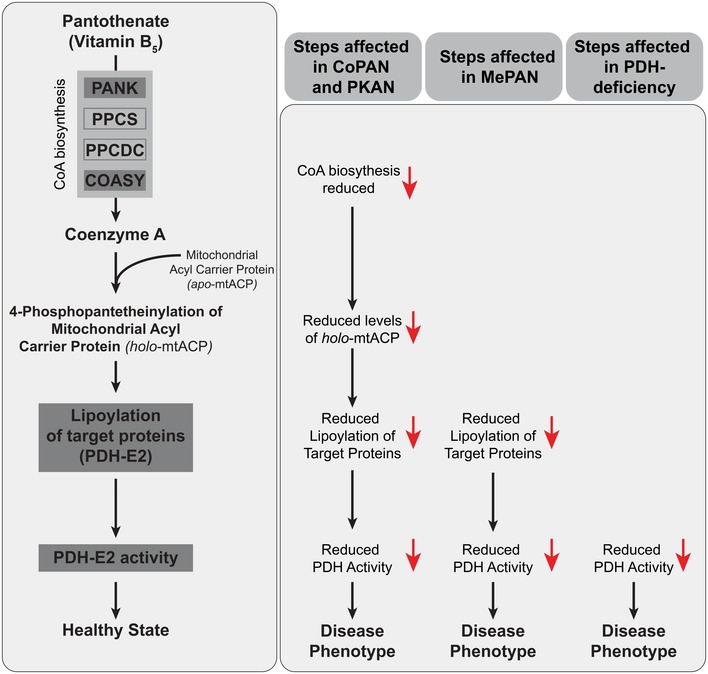Figure 2. De novo CoA biosynthesis pathway and key downstream steps to link PKAN, CoPAN, MePAN, and PDH‐E2 deficiency.

Left part: Proposed linear pathway linking CoA‐mtACP‐PDH. From top to bottom: The de novo CoA biosynthesis pathway starts with the cellular uptake of pantothenate (Vitamin B5). Pantothenate kinase (PANK), phosphopantothenoylcysteine synthetase (PPCS), phosphopantothenoylcysteine decarboxylase (PPCDC), and coenzyme A synthase (COASY) are enzymes required for the de novo biosynthesis of CoA. Mitochondrial acyl carrier protein (mtACP) undergoes a posttranslational modification and active holo‐mtACP is formed. This posttranslational modification consists of 4′‐phosphopantetheine, which is derived from CoA. Holo‐mtACP in turn is required for lipoylation of PDH‐E2, a modification necessary for activation of the PDH complex. It is hypothesized that a decrease in CoA biosynthesis leads to decreased amounts of holo‐ACP, decreased lipoylation of PDH‐E2, and decreased activity of PDH.Right part: Steps that are affected in PKAN, CoPAN, MePAN, and PDH‐E2 deficiency. Primary affected steps caused by the genetic defects are depicted as the most upstream steps as well as the hypothesized downstream steps for CoPAN, PKAN, and MePAN.
